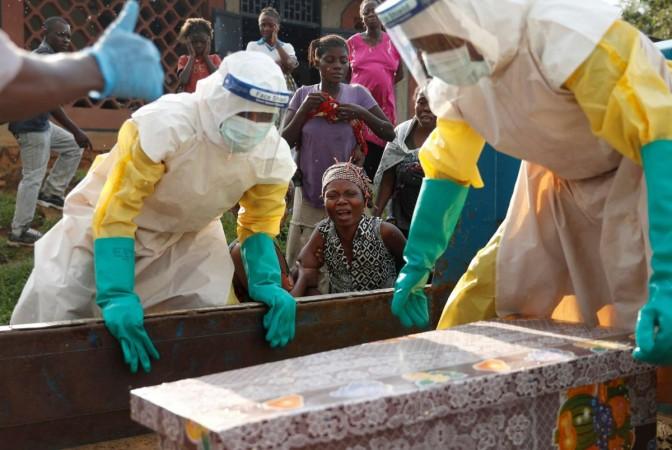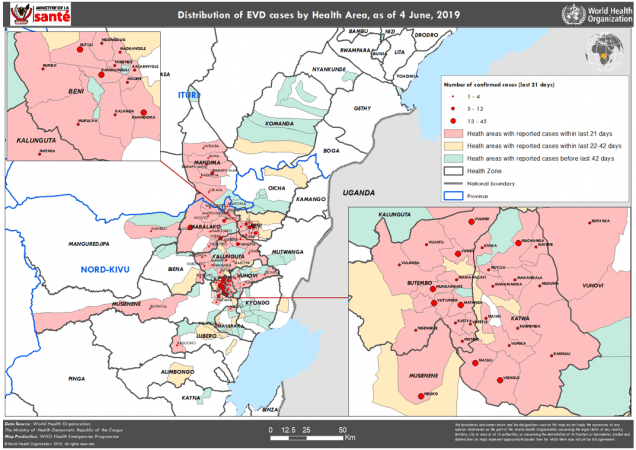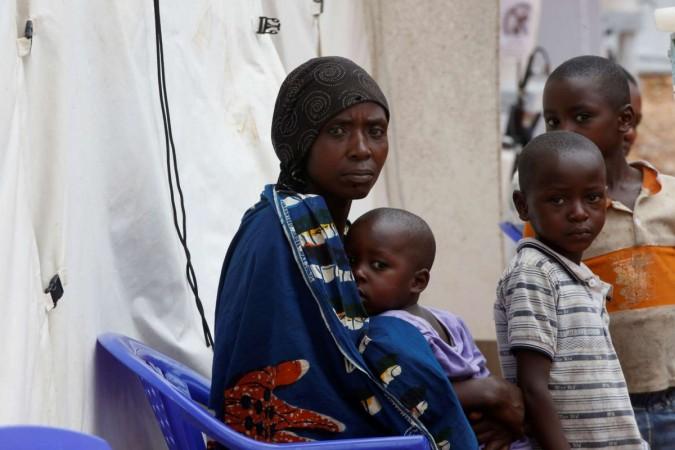
One-third (34 per cent) of affected people have died due to undetected Ebola virus infection in the past three weeks in Congo, according to the World Health Organization. Around 88 new cases of Ebola virus disease (EVD) were reported every week.
Dr Mike Ryan, executive director of WHO Health Emergencies Programme at a press conference held at Geneva on Thursday said that the numbers are comparatively better from the peak average of 126 cases reported per week in the month of April.
Out of the total 2025 registered cases of EVD as of June 4, 1357 people have died due to the epidemic according to WHO statistics.
Around 130,000 people have been vaccinated in Congo according to official figures.
The virus outbreak is the second-worst reported on record. The 2014–2016 outbreak in West Africa was the largest Ebola outbreak since the virus was first discovered in 1976.
He further added that while the cases have seen a decline in hotspots such as Katwa, Mandima and Beni, an increase in the number of new cases has been reported from Mabalko Health Zone and high infection rates continue within the Butembo city.
The outbreak is reported to be contained within 12 active health zones in North Kivu and Ituri provinces.

One of the biggest challenge identified is the time between detecting, reporting and admission of cases at Ebola treatment/transit centres. According to the statement, one-third (34 per cent) of affected people have died undetected in the past three weeks.
The WHO have cited deteriorating security situation, general mistrust of the communities as the reasons behind temporary suspension and delays of case investigation and response activities in affected areas.
Population movement has also been cited as one of the major challenges in risk mitigation interventions. The statement states that high rates of population movement across Congo to neighbouring countries have restricted outreach programmes. The staff's experiencing fatigue over the long duration of the current outbreak and strain on the limited resources have also been cited as the intervention's drawback.
The rising number of ETC centres in a number of neighbouring countries are said to increase capacity to rapidly detect cases and mitigate the local spread of the virus. The international organization have identified the scaling up of such efforts in neighbouring countries as interventions in its mitigation strategy.
The report indicated that women and children are the most affected demography. Of the total number of confirmed and probable cases, 58 per cent (1170) were women and 29 per cent (589) were children aged less than 18 years.

The number of healthcare workers infected has also raised over the past month. The report state that around 5 per cent of the total cases were reported to be healthcare workers.
While substantive rates of transmission continue within affected communities, a further wave of the outbreak is expected in the future.
As there is no licensed vaccination to protect individuals from contracting the Ebola virus, no travel measures are imposed to travel to and from the Democratic Republic of the Congo. However, an experimental Ebola vaccine called rVSV-ZEBOV is being used in the ongoing outbreak in Congo.
The WHO has advised travellers to seek medical guidance before travel and to practice good hygiene practices.
Dr Maurice is a doctor, but he is also a patient who recently recovered from #Ebola.
— World Food Programme (@WFP) June 2, 2019
WFP helps contain Ebola in #DRCongo by providing food to people carrying the virus & providing crucial logistical services that enable responders to reach new or remote outbreak areas quickly.? pic.twitter.com/3QfvTqY4Mt















